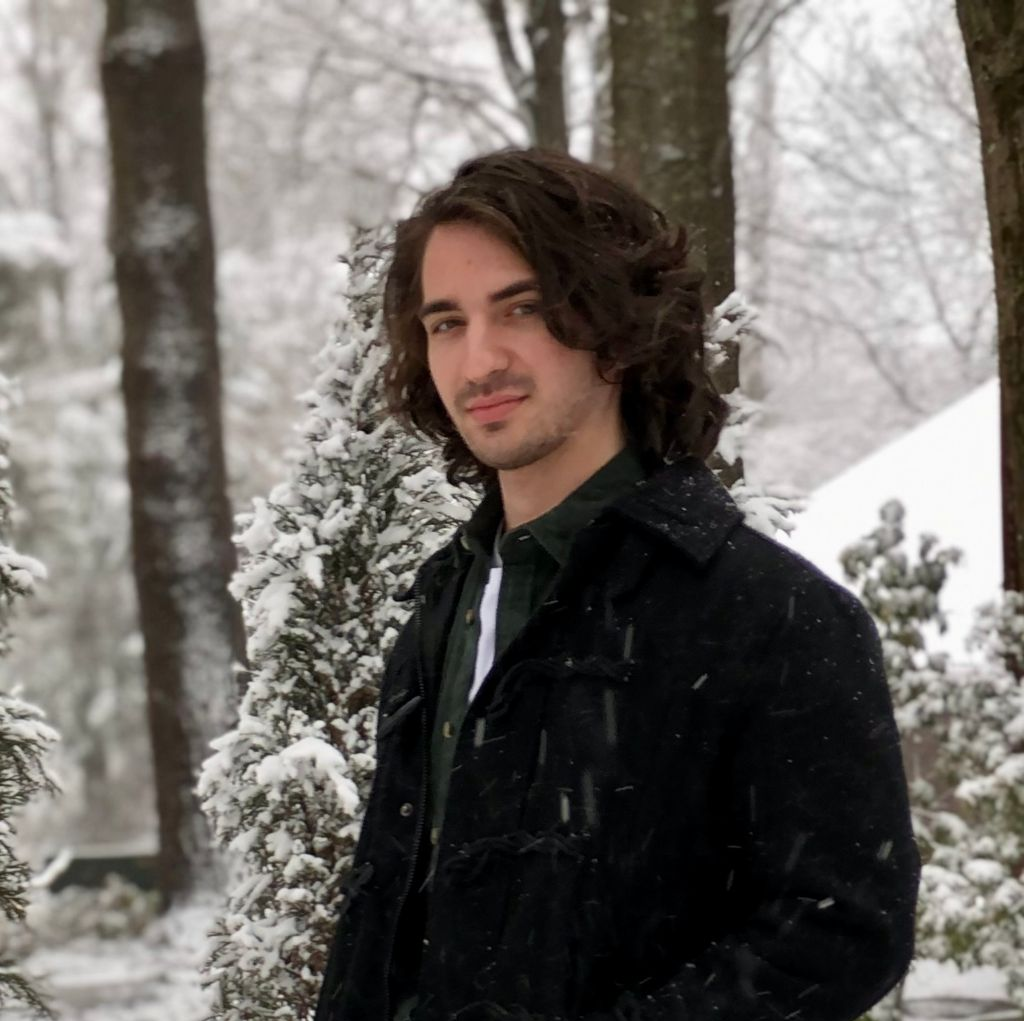Field Work
Lake Kleifarvatn, Iceland
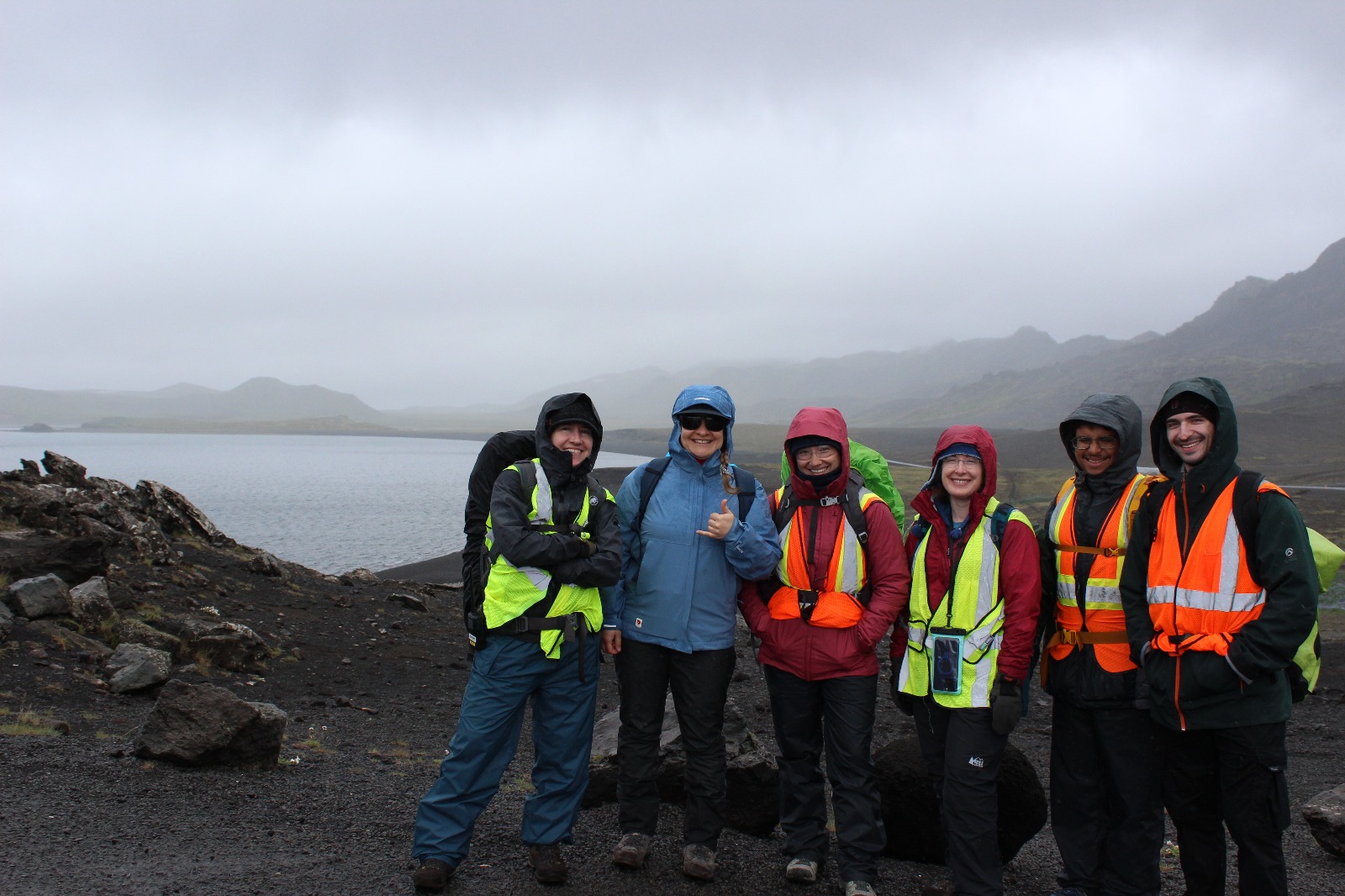 I participated in the NASA Goddard SWIFT expedition to southwest Iceland as a collaborating scientist in June 2025. As part of a team led by Dr. Dina Bower, we performed field measurements and sampling of mineral and sediment deposits from subaqueous and subaerial vents at the hydrothermally-fed Lake Kleifarvatn and a nearby hot spring. Our team utilized field portable instruments, including Raman, XRF, XRD, and HSI, as analogs to planetary mission-relevant instrumentation to assist in the interpretation and reconstruction of similar Mars environments. Back in the lab, I am using the samples collected from these sites to characterize their microbial communities as well as perform laser desorption mass spectrometry (LD-MS) to detect organics via a modified commercial instrument analogous to the MOMA instrument on the upcoming Rosalind Franklin rover to Mars.
I participated in the NASA Goddard SWIFT expedition to southwest Iceland as a collaborating scientist in June 2025. As part of a team led by Dr. Dina Bower, we performed field measurements and sampling of mineral and sediment deposits from subaqueous and subaerial vents at the hydrothermally-fed Lake Kleifarvatn and a nearby hot spring. Our team utilized field portable instruments, including Raman, XRF, XRD, and HSI, as analogs to planetary mission-relevant instrumentation to assist in the interpretation and reconstruction of similar Mars environments. Back in the lab, I am using the samples collected from these sites to characterize their microbial communities as well as perform laser desorption mass spectrometry (LD-MS) to detect organics via a modified commercial instrument analogous to the MOMA instrument on the upcoming Rosalind Franklin rover to Mars.
Polloquere Hot Spring, Andean Altiplano, Chile
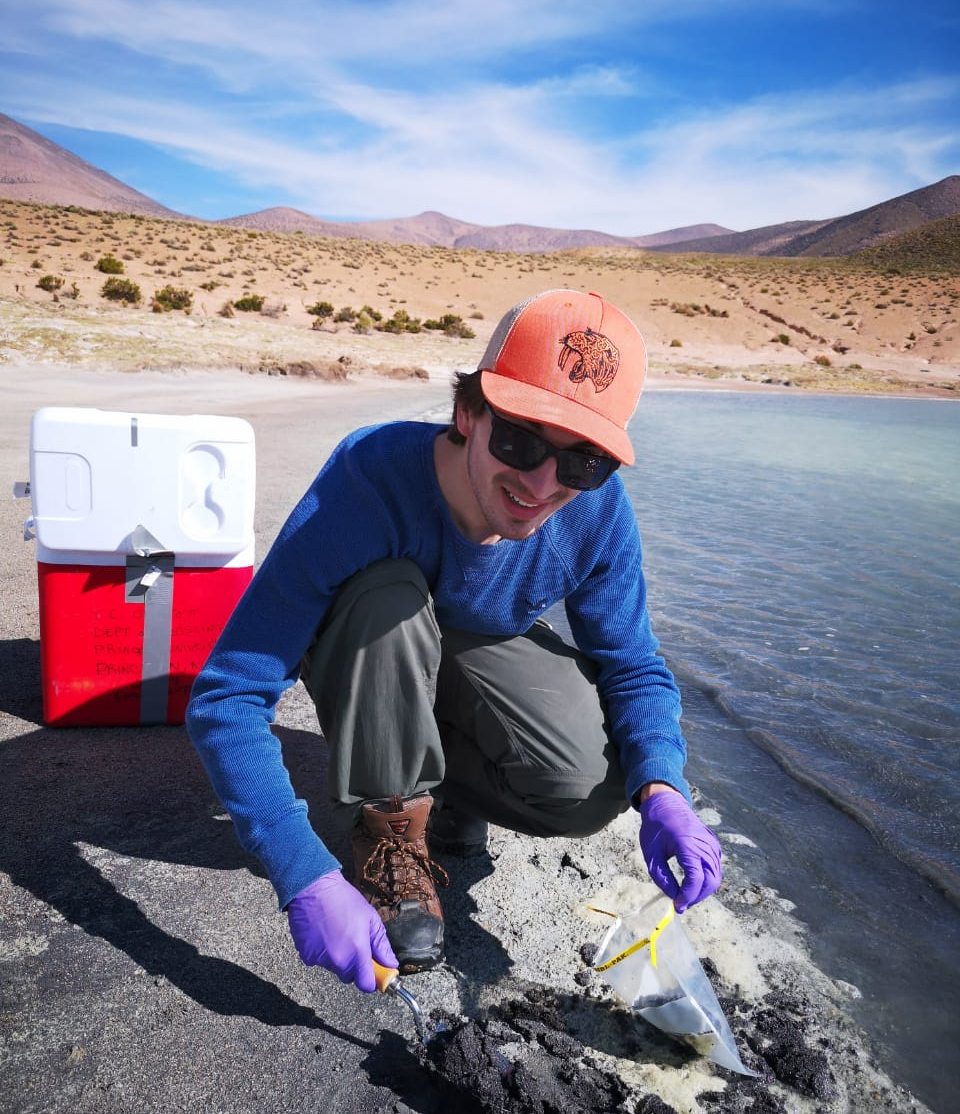 I completed a successful sampling expedition across an environmental gradient in northern Chile (Spring 2019) together with collaborators Drs. Sebastian Abades, Nicole Trefault, Francisco Alfaro, and Marlene Manzano from Universidad Mayor. The trip extended from the northern Atacama Desert to 4,800 meters above sea level (masl; ~15,800 ft) in the Andean Altiplano. My primary objective was to sample soils surrounding the Polloquere Hot Spring (4,200 masl), a sulfurous geothermal spring in the Salar de Surire salt flat. The samples and measurements from this site form the crux of my dissertation, revealing how soil microbial community structure and metabolic potential change across the transition from hot spring to desert. Specifically, I tracked the abundance and activity of trace gas-oxidizing bacteria that scavenge hydrogen gas from the atmosphere to survive in the harsh, low nutrient conditions of the salt flat.
I completed a successful sampling expedition across an environmental gradient in northern Chile (Spring 2019) together with collaborators Drs. Sebastian Abades, Nicole Trefault, Francisco Alfaro, and Marlene Manzano from Universidad Mayor. The trip extended from the northern Atacama Desert to 4,800 meters above sea level (masl; ~15,800 ft) in the Andean Altiplano. My primary objective was to sample soils surrounding the Polloquere Hot Spring (4,200 masl), a sulfurous geothermal spring in the Salar de Surire salt flat. The samples and measurements from this site form the crux of my dissertation, revealing how soil microbial community structure and metabolic potential change across the transition from hot spring to desert. Specifically, I tracked the abundance and activity of trace gas-oxidizing bacteria that scavenge hydrogen gas from the atmosphere to survive in the harsh, low nutrient conditions of the salt flat.
Yellowstone National Park
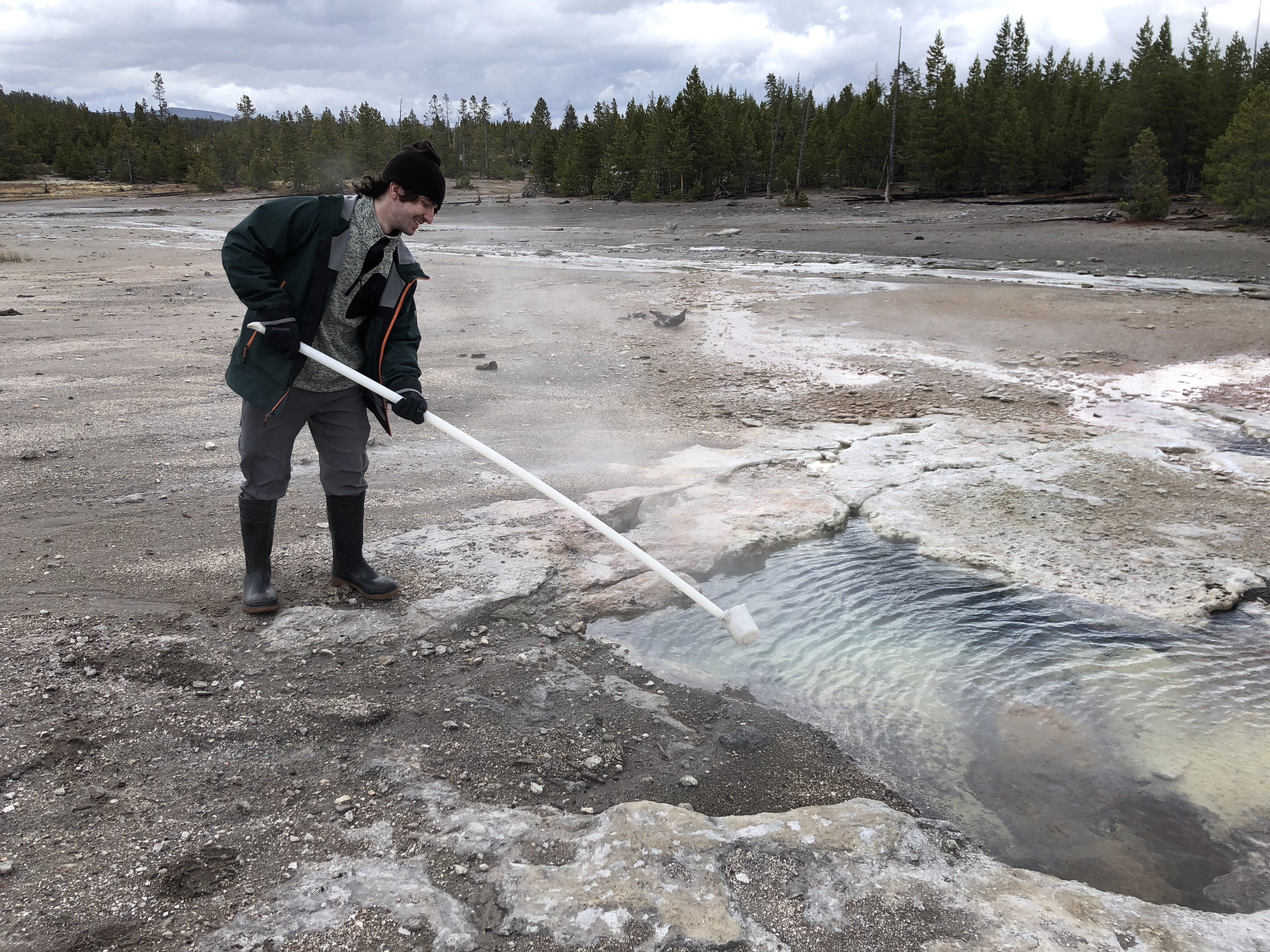 In collaboration with Dr. Eric Boyd and his team from Montana State University, I conducted another sampling campaign in the Norris Geyser Basin of Yellowstone National Park (Spring 2020). This region is the hottest of the geothermal areas in Yellowstone, containing a large number of hot springs, geysers, and fumaroles. I sampled soils across a short transect between two phase-separated hot springs, separated by only 15 meters. Due to the highly contrasting chemistries of the two springs, the microbial communities between them are also expected to exhibit widely different compositions and activities. We hypothesize that the subsurface geology responsible for this divergent pair of springs expresses itself at the surface through the soil microbiology.
In collaboration with Dr. Eric Boyd and his team from Montana State University, I conducted another sampling campaign in the Norris Geyser Basin of Yellowstone National Park (Spring 2020). This region is the hottest of the geothermal areas in Yellowstone, containing a large number of hot springs, geysers, and fumaroles. I sampled soils across a short transect between two phase-separated hot springs, separated by only 15 meters. Due to the highly contrasting chemistries of the two springs, the microbial communities between them are also expected to exhibit widely different compositions and activities. We hypothesize that the subsurface geology responsible for this divergent pair of springs expresses itself at the surface through the soil microbiology.
Moab Khotsong Mine, South Africa
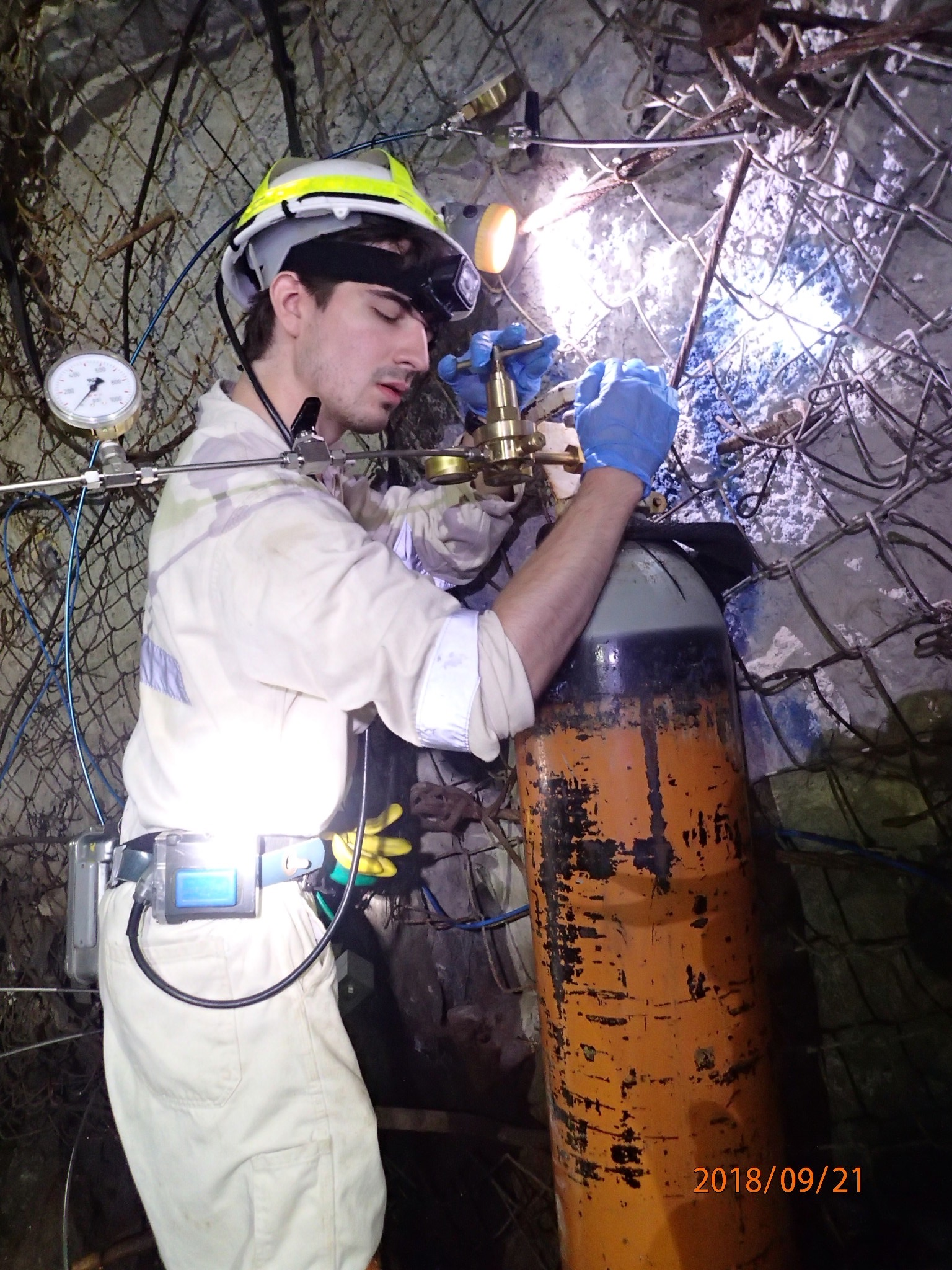 In Fall 2018, I traveled to Orkney, South Africa for a field campaign in the Moab Khotsong gold and uranium mine. The mine holds the record for the deepest single shaft in the world (~3,000 meters). We descended to 3.2 km depth below the Earth’s surface, where I built and installed a U-tube sampling system. The device was installed into a ~400 meter borehole for sampling of ancient, isolated water. After installation, I collected a variety of water samples and measurements that were used by collaborators at Princeton and University of the Free State in Bloemfontein to assess the chemistry and potential microbial life in the highly saline water.
In Fall 2018, I traveled to Orkney, South Africa for a field campaign in the Moab Khotsong gold and uranium mine. The mine holds the record for the deepest single shaft in the world (~3,000 meters). We descended to 3.2 km depth below the Earth’s surface, where I built and installed a U-tube sampling system. The device was installed into a ~400 meter borehole for sampling of ancient, isolated water. After installation, I collected a variety of water samples and measurements that were used by collaborators at Princeton and University of the Free State in Bloemfontein to assess the chemistry and potential microbial life in the highly saline water.
